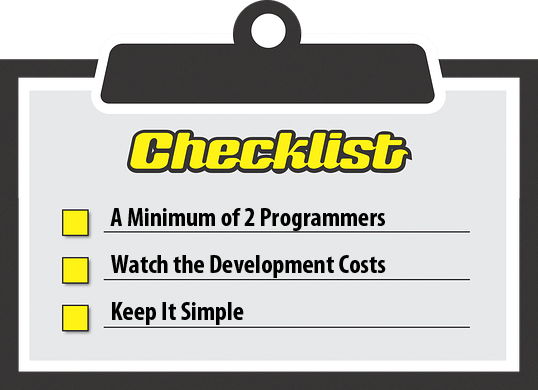Human Machine Interface (HMI): How to DIY
In this modern day and age, technology is everywhere you look. It’s the smartphone buzzing in everyone’s pocket, the tablet that takes the place of books, and the laptop found in homes across the globe. Each of those devices shares one universal thing in common: a Human Machine Interface (HMI).
In short, an HMI is a way for people to communicate with a machine. A keyboard or a multi-touch screen is a good example. The user inputs information, and the device or software registers the appropriate response.
With the introduction of new programming languages, more and more developers are trying their hand at making their own PC-based Human Machine Interface. However, here are a few things to consider before embarking on this crafty enterprise.
The Checklist for Making Your Own HMI
Before anyone jumps into the field, one must take stock of the needed resources on hand. After all, someone who’s well-prepared doesn’t make a run to the grocery store without a proper list.
- A Minimum of 2 Programmers. Both must be skilled and dependable. An HMI application needs to be maintained over decades. For the sake of continuity and the developer’s peace of mind, it’s best to have at least two people who know their way around coding.
- Watch the Development Costs. This one is fairly obviously, but it’s easier said than done. To keep the cost down, the machine builder original equipment manufacturer (OEM) must be able to churn out a great quantity of machines. The more units there are, the lower the price for the developer.
- Keep It Simple. All businesses will have to go through storms and rough patches. As a good rule of thumb, keep the HMI application simple. If anything goes wrong, it will be easier to fix and far less costly.
Developer Complications
The industry of computers is rapidly evolving and improving with every update. However, when this happens, the issue of compatibility arises for HMI developers. The application’s code must change to accommodate this newest change.
If the original programmers are no longer around, it’s necessary to review several alternatives.
Reverse Engineer the Code
The chore of reverse engineering is much like a trip down a slope. It takes more time and effort to go back up than it was to walk down. Fortunately, if the original code was recorded and stored properly, this can be avoided or, at the very least, mitigated.
Look for External Help
When there’s a leak in a pipe, it’s time to call a plumber. Likewise, a missing programmer could call for a system integrator or an HMI software supplier. Similar to customer support, this individual or company should have the staff and resources necessary for a quick fix.
Just be sure they’re certified for the job. Very few would trust a doctor without the proper credentials. Always do your homework.
Buy a Package
If the above options are unappealing, then a software package might be the answer. Some even offer the choice of an embedded HMI. This comes with a license already installed, which means it’s ready to go out of the box.
Get Quick, Easy, and Affordable HMI
[caption id="attachment_4089" align="aligncenter" width="400"] Product from Acnodes Corporation, featuring HMI.[/caption]
Product from Acnodes Corporation, featuring HMI.[/caption]
Take the time to check off everything listed here. Weigh the pros and cons before making a decision. Most of all, always have a back-up plan.
If you’re interested in an embedded HMI PC for your application or simply for research purposes, you’re welcome to browse through Acnodes Corporation’s list of products. If you have any questions, please give us a call at (909) 597-7588. A professional will be in touch with you shortly.






